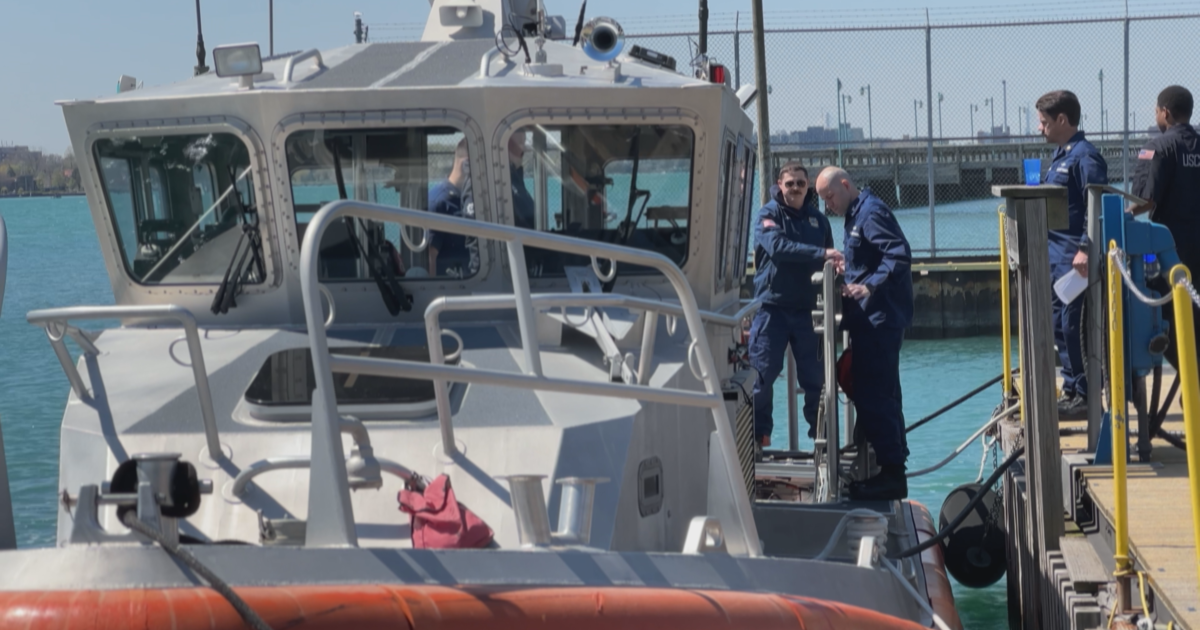EPA Funds Projects To Battle Invasive Species In Great Lakes
CHICAGO -- The United States Environmental Protection Agency Tuesday announced 21 Great Lakes Restoration Initiative grants totaling nearly $8 million for projects to combat invasive species in the Great Lakes basin, including the much-feared Asian carp.
"These EPA grants will prevent the spread of invasive species, increase the accuracy of early detection techniques, and control non-native flora and fauna that have invaded the Great Lakes basin," said Susan Hedman, Great Lakes National Program Manager and EPA Region 5 Administrator. "These projects will improve the environmental health and economic vitality of the world's largest freshwater system."
Over the last three years, the GLRI has provided $172 million for the prevention, detection and control of invasive species in the Great Lakes ecosystem. About $80 million of this GLRI funding is being used to support the interagency Asian Carp Control Strategy Framework.
Invasive aquatic animal species compete with or prey upon native species and damage habitat. Non-native terrestrial and aquatic plant species can force out native plants and take over large areas of habitat, making the Great Lakes ecosystem less diverse and less resilient.
Michigan grants were as follows:
Central Michigan University, $356,154, Assessing Aquatic Invasive Species Risk in the Erie Canal Corridor: This project will assess the risks presented by aquatic invasive species to the Erie Canal Corridor. The project will catalogue non-native species in the Mohawk-Hudson River and Lake Champlain basins and identify currently restricted AIS that have the potential to spread into the ECC. By using environmental DNA surveys, the project will help identify the current range of priority AIS, potential invasion pathways, and future surveillance needs.
Grand Traverse Conservation District, $399,971, Controlling Terrestrial Invasive Species in Northwest Lower Michigan: The project will control Phragmites and other terrestrial invasive species on over 3000 acres of public and private land located in Manistee, Benzie, Leelanau, and Grand Traverse Counties. The project will also control Phragmites and other terrestrial invasive species on more than 240 acres of newly exposed bottomland in the vicinity of three decommissioned hydroelectric dams along the Boardman River. In addition, the project will increase the awareness of the residents of the targeted four-county area regarding the impacts of invasive species.
Michigan State University, $600,000, Development of a Portable Monitoring Device for High-Risk Invasive Species: This project will perform the laboratory and fieldwork necessary to develop a portable environmental DNA-based detection device which will be able to detect high-risk aquatic invasive species of concern in the Great Lakes basin. The device will be evaluated to assess sensitivity to small amounts of eDNA, species-specificity, speed, and ruggedness.
Michigan State University, $392,823, Use of a Chemical Repellent to Improve Sea Lamprey Control: The project will demonstrate the effectiveness of using a chemical repellant to prevent sea lamprey from entering three potential lamprey spawning streams in Michigan that have a history of lamprey infestation. The use of the chemical repellent is expected to improve the efficiency of the sea lamprey pesticide control program by limiting sea lamprey spawning activity (and the need for pesticide treatments) to a smaller number of Great Lakes watersheds.
Wayne State University, $310,995, Evaluating Potential Pathways for the Spread of Aquatic Invasive Species: This project will develop and test methods for calculating risks from various pathways of aquatic invasive species transfer. This project will then determine the best AIS monitoring, sampling, and prevention strategies for Great Lakes areas with the highest risk of invasion. Project results will be integrated into a decision-making process that matches various types and degrees of AIS-related risk with recommended management strategies.
Tuesday's announcement is the most recent in a series of announcements to highlight EPA's 2012 GLRI grants for restoration and protection projects. The GLRI, initially proposed by President Obama in February 2009, is the largest investment in the Great Lakes in more than two decades. More information about the Initiative is available at www.glri.us.
A full list of EPA 2012 grants for project to combat invasive species is available at www.epa.gov/greatlakes/glri/invasives.html.



